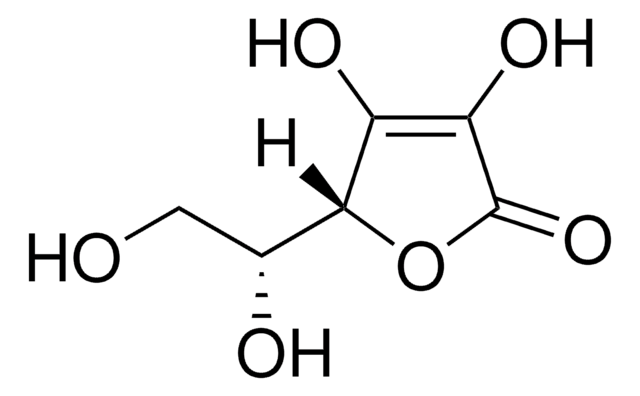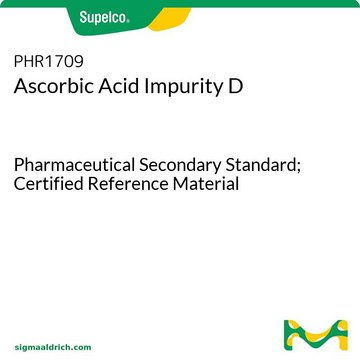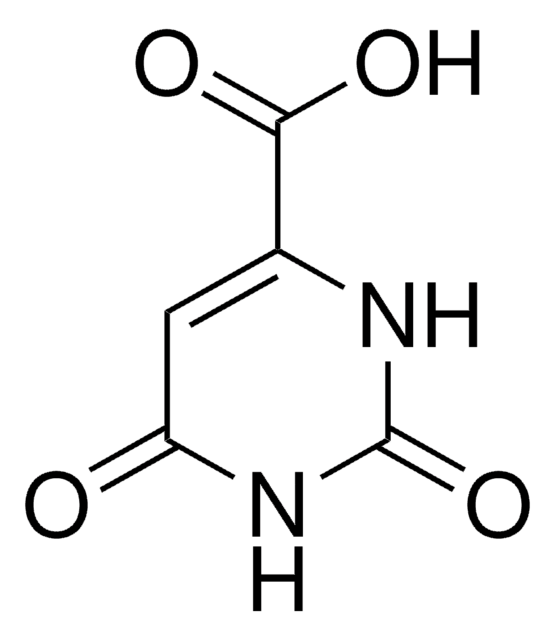856061
D-(−)-Isoascorbic acid
98%
Synonym(s):
D-erythro-Hex-2-enoic acid γ-lactone, D-Araboascorbic acid, Erythorbic acid, Glucosaccharonic acid, NSC 8117
About This Item
Recommended Products
Quality Level
assay
98%
form
crystals
optical activity
[α]25/D −16.8°, c = 2 in H2O
mp
169-172 °C (dec.) (lit.)
SMILES string
[H][C@@]1(OC(=O)C(O)=C1O)[C@H](O)CO
InChI
1S/C6H8O6/c7-1-2(8)5-3(9)4(10)6(11)12-5/h2,5,7-10H,1H2/t2-,5-/m1/s1
InChI key
CIWBSHSKHKDKBQ-DUZGATOHSA-N
Looking for similar products? Visit Product Comparison Guide
Related Categories
General description
Application
- enantiopure aminotriol
- (3R, 4S)-4-hydroxylasiodiplodin and D-mycinose
- enantiomerically pure stereoisomers of α,β-dihydroxy-aldehydes or acids
Storage Class
11 - Combustible Solids
wgk_germany
WGK 2
ppe
dust mask type N95 (US), Eyeshields, Gloves
Choose from one of the most recent versions:
Already Own This Product?
Find documentation for the products that you have recently purchased in the Document Library.
Customers Also Viewed
Our team of scientists has experience in all areas of research including Life Science, Material Science, Chemical Synthesis, Chromatography, Analytical and many others.
Contact Technical Service




